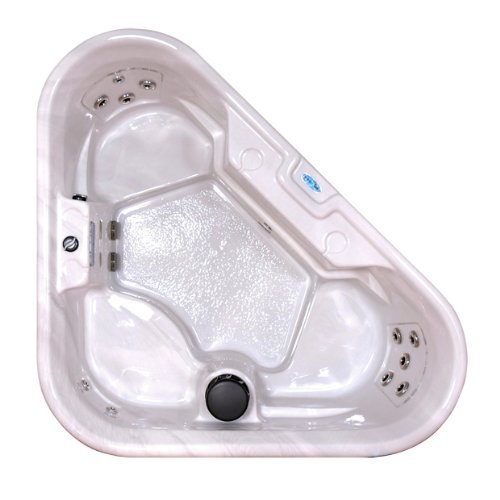Spa Models include: Akela, Kalia & Ipo
Aloha Hot Tubs is a division of Up Marketing based out of Corona, California. They have an extensive line of hot tubs and spas to choose from at very reasonable prices. Aloha Hit Tubs also makes custom designs to suit your particular needs. Some of their more popular product lines include Akela Hot Tubs, Kalia Hot Tubs, and Ipo Hot Tubs.
The Akela Hot Tub line is extremely popular due to the size and jet configuration of each tub. The 20 jet model is designed to seat 5 people, and comes with one lounge seat and one hot seat. The dimensions are 84" x 84" x 36" holding approximately 330 gallons. These tubs come standard with a digital control panel and cover.
The Kalia Hot Tub line is also very popular. These tubs are round in shape and ideal for indoor and outdoor use. The 12 jet model is designed to seat 4 people and comes with various jet configurations. The dimensions are 72" x 72" x 34" and it holds approximately 175 gallons. This tub comes complete with a digital control panel and cover included.
The Ipo Hot Tub line is designed with the individual in mind. The 13 jet model is designed for 1-2 people and is ideal for indoor settings. The dimensions are 82" x 40" x 33" holding approximately 150 gallons. As with the others, this tub comes standard with a digital control panel and cover included.
Each hot tub is manufactured with top quality materials. The skirting is made from a long lasting "Duratemp" composite, with removable side panels. They are insulated with Arctic Pak insulation for maintaining heat and reducing energy costs.
Aloha Hot Tubs also offer upgrades such as ozone generators and light filter packages. The Ozone Generators add ozone to the water which helps reduce bacteria and other organic matter. The light filter packages allow you to change the look to the color of the water in the tub.
Aloha Hot Tubs offers free shipping and handling for most models, plus all hot tubs come with an extensive warranty program. Aloha also offers a lay-away program and financing is available for qualified customers.
The Akela Hot Tub line is extremely popular due to the size and jet configuration of each tub. The 20 jet model is designed to seat 5 people, and comes with one lounge seat and one hot seat. The dimensions are 84" x 84" x 36" holding approximately 330 gallons. These tubs come standard with a digital control panel and cover.
The Kalia Hot Tub line is also very popular. These tubs are round in shape and ideal for indoor and outdoor use. The 12 jet model is designed to seat 4 people and comes with various jet configurations. The dimensions are 72" x 72" x 34" and it holds approximately 175 gallons. This tub comes complete with a digital control panel and cover included.
The Ipo Hot Tub line is designed with the individual in mind. The 13 jet model is designed for 1-2 people and is ideal for indoor settings. The dimensions are 82" x 40" x 33" holding approximately 150 gallons. As with the others, this tub comes standard with a digital control panel and cover included.
Each hot tub is manufactured with top quality materials. The skirting is made from a long lasting "Duratemp" composite, with removable side panels. They are insulated with Arctic Pak insulation for maintaining heat and reducing energy costs.
Aloha Hot Tubs also offer upgrades such as ozone generators and light filter packages. The Ozone Generators add ozone to the water which helps reduce bacteria and other organic matter. The light filter packages allow you to change the look to the color of the water in the tub.
Aloha Hot Tubs offers free shipping and handling for most models, plus all hot tubs come with an extensive warranty program. Aloha also offers a lay-away program and financing is available for qualified customers.
























